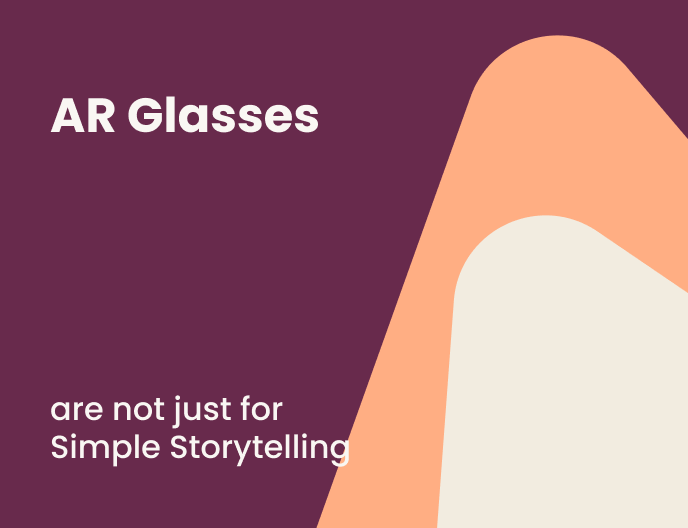
Imagine a world where information floats around you, and you can control it with simple touches. That’s the power of Augmented Reality glasses. These special lenses let users visually blend virtual tools with the real world. With its help, you can manage complex tasks and even train your staff in a virtual, immersive way — “see through the eyes of the trainer” so to speak. These are just a few scenarios where AR glasses can be useful.
But there’s much more to explore.
According to recent observations by MoldStud, AR glasses can increase expertise retention by up to 70% compared to traditional training methods. This suggests that AR glasses are not just for simple storytelling; they could also transform school education.
If you’re not familiar with how AR glasses work, let’s take a closer look.
How Do AR Glasses Work
There are two main types of AR glasses: camera-based and projection-based.
Camera-based glasses have external cameras that capture the outside view and display it on a screen inside the glasses. This is called ‘pass-through.’ If the device is off, you see nothing but darkness. When it’s on, the cameras show the outside world in real-time and with (hopefully) minimal lag. The device’s processor and software layer the real world with digital content for an augmented reality experience. Examples include Apple Vision Pro and Meta Quest 3.
Projection-based glasses use a transparent display in front of the glasses. Digital or holographic images are projected onto this display, mixing with the real world. If these glasses are off, you can still see the outside world. Examples include glasses by Microsoft, Vuzix, and Lumus.
Some glasses have LiDAR to scan the environment for object distances in real-time. Others have accelerometers and gyroscopes to track head movements, and some enable virtual touches, voice, or eye-tracking. All the software, hardware, and sensors work together in real-time to manage data and render augmented content.
The Outstanding Features and Benefits of AR Glasses.
The benefits of AR glasses go beyond just fun features. They can be very useful in office settings and can boost creativity.
User-friendly interface: AR glasses have an easy-to-use interface. You don’t need to know how to code. You can use them with drag-and-drop controls and voice commands.
Integration with the real world: AR content is different from traditional movie production. Sometimes it needs complex equipment or green screens, but not always. This flexibility can help cut production costs and time.
Interactive entertainment: AR allows for a new level of audience engagement. Imagine interacting with characters in a story or objects on a production site.
Practical Advice for CEOs and CTOs
As film director George Lucas said, “The future of cinema will be the marriage of live action and animation.“ AR glasses will take this idea further by merging real-world and digital content in real-time, creating super-immersive experiences that will change how we create and consume content.
While this is exciting, how does this affect company leaders practically?
- Immersive experiences boost sales: If you are the CEO of a marketing company, you can use AR glasses to create engaging content for consumers. Similarly, immersive storytelling can help you grow your audience.
- Education for the future: AR glasses can transform learning processes. They allow learning in simulated environments, helping educate your staff on new strategies and complex machines. For a CTO, AR offers new tech programs to enhance workflow experiences.
You can even program different scenarios to help your staff develop new strategies within their work scope.
Conclusion
AR glasses have been around for over a decade, but they are now becoming more impactful. They can change consumer experiences in marketing, education, and other fields. There are many examples of immersive and memorable experiences using AR glasses that businesses can use effectively.
If you want to learn how your company can use AR to enhance your business strategy, let’s discuss it.
This could be a new era for your company, where virtual and real worlds mix to improve consumer experiences.
